Disney Overhauls DAS to Reduce Abuse & Misuse
Walt Disney World and Disneyland have revealed that they’ll be overhauling Disability Access Service (DAS), and launching tools for guests to plan their visit–including a new method of accommodation for guests who are unable to wait in a regular standby line for extended periods of time. This details DAS changes and how they should cut down on Lightning Lane abuse and misuse.
For starters, Walt Disney World and Disneyland have both updated their Accessibility Services websites, which outline the many options for guests with disabilities visiting the Florida and California parks, respectively. There’s considerable overlap between the coasts, with similar info on planning, parking and transportation, mobility devices, accessing attractions, hotel services, and more.
Disney’s site updates better showcase the variety of accessibility options available at the parks. The goal is to provide greater clarity so each service is used only by the guests who require them–since no single accommodation can serve every unique need. Along with this, Walt Disney World and Disneyland are once again updating DAS policies to support guests who, due to a developmental disability such as autism, are unable to wait in a standby line for an extended period of time.
Disney is working with health professionals to help better assist guests with accessing attraction queues, among other things. To accomplish this, Walt Disney World and Disneyland will be taking several steps over the course of the coming months. In theory at least, these should minimize issues and allay anxieties about the uncertainties that accompany any sweeping systemic changes at Walt Disney World and Disneyland.
The parks will be adding more Cast Members and investing in specialized training to assist guests, in order to better identify and understand the best tools and options, based on their unique needs. The parks will be adding more options for guests needing assistance with lines, including a defined “return to queue” process for guests who need to exit the standby line and re-enter.
Walt Disney World and Disneyland are partnering with Inspire Health Alliance’s trained medical professionals to assist Cast Members as needed in determining eligibility for appropriate accommodations and ensuring that these accommodations are provided only for the guests for whom they are intended and not misused.
To meet these goals, Walt Disney World and Disneyland are also extending Disability Access Service enrollment for eligible guests from 60 days to 120 days and adjusting DAS party size to include immediate family members only, but otherwise no more than 4 people. Meaning that if you’re a DAS guest visiting with 5 immediate family members, all will be able to accompany you in line. But if you’re heading to the park with 5 friends, only you and 3 others would be able to join the line together via DAS.
The changes identified in this post take effect on May 20, 2024 at Walt Disney World, and on June 18, 2024 at Disneyland Resort. If you’ll be visiting on or after those dates and believe you might need Disability Access Service, it’s a good idea to review the official DAS page for Walt Disney World and official DAS page for Disneyland to familiarize yourself with the various guest services and needs for each.
After that, you can initiate a connection with the team of Cast Members via the official websites if you believe Disability Access Service might be necessary and appropriate for your circumstances. From there, it’ll be a case-by-case conversation that’ll vary a little between the coasts.
At Disneyland Resort, guests can use the virtual video chat system to have a conversation with the Accessibility Services team about their unique needs and the services they might require.
While it’s recommended that guests include this as part of their pre-arrival planning process, the option to have this conversation in person will still be available, and those conversations will move from Guest Relations inside Disneyland and Disney California Adventure to a new designated location in the Esplanade between the two parks.
Over in Florida, guests of Walt Disney World will have a virtual video chat with the Accessibility Services team before their visit, which will include conversations about the guest’s unique needs and the services they might require. Just like in California.
The key difference for Walt Disney World is that the process upon arrival is not in-person. You will not speak with a live Cast Member at Guest Relations. Instead, guests seeking accommodations on the day of their visit will be directed to a location to use an iPad and have a virtual chat. Basically, same process as pre-arrival, except you’re wasting time while in the park (instead of when at home).
Given that alone–and the possibility of this taking extra time based on demand–we highly recommend going the pre-arrival route at Walt Disney World. Nothing is going to change, outcome-wise, with getting or not getting DAS. It’s just where you take the time to go through the process.
Cast Members at both Walt Disney World and Disneyland will work with a team of specially trained health professionals from Inspire Health Alliance in conversations needed to determine a guest’s eligibility for DAS. The expertise of Inspire Health Alliance will help make sure that DAS is provided only to the small percentage of guests for whom it is intended and who require it.
The outcome of these personalized conversations may mean registering a guest for DAS. Alternatively, guests may need to be reminded of the other types of services available, such as a line-return option for guests who may need to visit the restroom with greater frequency, ASL interpreting services at select experiences, service animal relief areas, or wheelchair access and location return times for those using a mobility device.
Again, there is no one-size-fits-all accommodation, and Disability Access Service is not simply a free FastPass for disabled guests. It is, and always has been, a service provided to support guests who, because of a disability, are unable to wait in a regular standby line for extended periods of time.
“Disney is dedicated to providing a great experience for all Guests, including those with disabilities, which is why we are so committed to delivering a wide range of innovative support services aimed at helping our Guests with disabilities have a wonderful time when visiting our theme parks,” said a spokesperson for Walt Disney World Resort.
While who qualifies for accommodations does not appear to be changing, the process for evaluating DAS requests sounds as if it will become more rigorous and less of a rubber stamping process with the new-look DAS aimed at accommodating guests with a “developmental disability like autism or similar.” The anticipated outcome is reducing the frequency with which DAS is issued.
There are a number of reasons for this, with the biggest being an explosion in DAS at Walt Disney World and Disneyland. Use of the service has more than tripled in the last 5 years; these changes will recalibrate the program and reduce misuse. That will improve the DAS experience for guests who truly need the accommodation.
It will also have second-order effects for both Lightning Lane and standby guests. As we’ve said many times before, queueing is a zero-sum game. Attraction capacity is finite, so if someone is winning, that means someone else is losing. But we’re getting ahead of ourselves–more on all of this in the commentary.
Here’s the process of how the new-look Disability Access Service will work at Walt Disney World, pulled from the official website…
Disney Parks have an unwavering commitment to providing a welcoming, inclusive environment and accessible experiences for our Guests. DAS is one of the programs offered at the Walt Disney World Resort theme parks intended to accommodate only those Guests who, due to a developmental disability like autism or similar, are unable to wait in a conventional queue for an extended period of time.
For Guests visiting from April 9 through May 19, 2024, please note:
- Pre-arrival conversations to determine eligibility for DAS are available 2-30 days prior to your park visit.
- In-person conversations to determine eligibility for DAS will continue to be at Guest Relations locations.
- You can book up to 2 one-hour return windows for select experiences using our DAS Advance planning option.
- DAS is valid for up to 30 days from the start of the registration. Once the service has elapsed, Guests will need to re-register.
What to Know About DAS
- DAS is intended to accommodate a small percentage of Guests who, due to a developmental disability like autism or similar, are unable to wait in a conventional queue for an extended period of time.
- DAS doesn’t provide immediate access to experiences, but rather allows Guests to request a return time for a specific experience that is comparable to the current standby wait.
- The Guest who is requesting to use DAS must be present during registration and experience the attraction when redeeming a DAS return time at Walt Disney World theme parks.
Speak with a Cast Member
Guests can meet virtually with a Cast Member using live video chat to determine what services may be appropriate to support their visit to the theme parks, including DAS. You may have a pre-arrival conversation as soon as 30 days in advance of a park visit.
Please note: Guests visiting now through May 19 may visit a theme park Guest Relations location to speak with a Cast Member. In-person registration will no longer be available at Walt Disney World theme park Guest Relations locations starting May 20, 2024.
Same-Day DAS Return Time Self-Selection
Guests registered in the DAS program can make return time selections in the My Disney Experience mobile app on the day of their park visit.
Any member of a DAS party can obtain a return time for the whole party, but the Guest registered for DAS must be present and experience the attraction when the DAS return time is redeemed.
DAS return times are valid until the park closes or an attraction closes for the day. A party can only hold one DAS return time at once. Guests without a mobile device can also visit Guest Relations or a Guest Experience Team location to receive return times.
How to Access the DAS Return Time Self-Selection Tool
After entering a park, open the My Disney Experience mobile app and log in to your account. Tap on the menu ( ≡ ) at the bottom of the screen. Then, tap the DAS button to select the attraction to make your return time. The tool can also be accessed from attraction detail screens.
Turning to commentary, regular readers probably knew this was coming as it was a big focus of Walt Disney World Cracks Down on DAS Abuse. The catalyst for that article was Walt Disney World trespassing third-party tour guides from the parks due to the sale of unauthorized services, including in-park offerings like Genie+ line-skipping services and access to the Disability Access Service. In an emailed statement at the time, Walt Disney World indicated that that they are taking additional steps to enforce their rules that prohibit commercial activities because of a “significant increase in these rule violations.”
“When this activity happens, it impacts the experience of other guests following the rules — including our guests with disabilities — and impedes our theme park operations,” a Walt Disney World spokesperson wrote. “Just like Starbucks would not permit a third party to come into their stores to sell coffee to their customers, Disney does not permit unauthorized commercial activities in its theme parks.”
While the news was about a crackdown on third party tour guides, our commentary revolved around a crackdown on DAS abuse–as we had heard even then that one was on the horizon. In other posts about pre-arrival Lightning Lane selections, we’ve predicted that DAS reform was a necessary prerequisite to other changes with paid ride reservations. So that another change is happening is wholly unsurprising to us–it’s been in motion for a long time. It’s the specifics that are interesting.
With regard to those specifics, the biggest surprise to me is that Walt Disney World is not using the International Board of Credentialing and Continuing Education Standards (IBCCES) Attractions Assistance Pass that has become somewhat of an industry standard. Most notably for Florida theme park fans, Universal Orlando made the switch to that last year.
With IBCCES, guests must sign up before their visit and upload documentation for review. Upon qualifying via IBCCES for the Attractions Assistance Pass, the theme park operators then contact them about accommodations they may need. However, there’s already been litigation in California involving IBCCES, with one lawsuit focusing on the pre-planning requirement.
That likely explains why the changes to Disability Access Service have been delayed, as Disney opted to partner with Inspire Health Alliance as opposed to IBCCES. It’s also probably why DAS will still offer options upon arrival on both coasts (a more robust day-of system in Disneyland could be due to that litigation, California laws, or Disneyland’s disproportionately local demographics–or a combination of all three).
It sounds to us like the DAS system with Inspire Health Alliance will stop short of introducing the rigor of IBCCES, but that’s just an initial reaction based upon the new DAS literature that’s been shared thus far. It’ll really come down to implementation and execution–both of which are unknowns until the system fully launches in May and June 2024.
Continuing along, I’ll share the same simple statement in previous commentary: two things can be true at the same time. First, that reasonable disability accommodations are very necessary for many Walt Disney World guests to have an enjoyable experience, including those with invisible disabilities. Second, DAS abuse or misuse is widespread and needs addressing.
Above all else, I would implore you to err on the side of courtesy–both in life and in the sure to be contentious issue of DAS reform. There are myriad invisible disabilities from which other guests could suffer, and the rude words or judgmental gaze of guests ‘scanning’ a person using DAS to ‘make sure’ they really have a disability are awful.
We’ve heard from countless readers over the years who are lifelong fans of Disney because the parks made a disabled family member feel like a VIP or at least normal for a little while, and accommodated them like nowhere else on earth. These stories tug at the heartstrings. We’ve also heard from countless individuals who have a serious disability and couldn’t experience the parks like everyone else but for DAS, and other guests made them feel ostracized. Those stories are heartbreaking.
Hearing all of these stories, I will happily wait in line an extra 5 minutes or whatever if it means those guests are able to have positive experiences at the parks. A nice bit of extra time to reflect, count my blessings and all that. Because the bottom line is that anyone using DAS out of necessity would trade places with you in a second and stand in long lines if it meant not being disabled.
To the second point that DAS abuse is widespread and needs addressing, we’ve been hearing ‘rumors’ of this for a while. Not really so much rumors–more unsubstantiated reports from those within the company. This has been an open secret, and a long time coming. Lightning Lane breakdowns of DAS vs. paid Genie+ guests are downright shocking to me. Now Walt Disney World is tacitly admitting that there’s an issue and that it needs to be fixed.
Intuitively, it makes complete sense. Those of you who visited during the phased reopening after FastPass+ had been suspended but before Genie+ rolled out likely saw usage of the FastPass queues. We certainly did! It started out occurring fairly infrequently, and increased (not so coincidentally) as crowds and wait times went up. By and large, this was driven by DAS.
Use of the FastPass lines started slow and got progressively busier during the phased reopening. This makes sense, as there’s a greater incentive to use a line-skipping service when there’s a longer line. If a posted wait time is 15 minutes, even those with the ability or privilege to skip might simply opt for standby. If that same attraction has a 60 minute posted wait time, it’s a very different story.
It doesn’t require a vivid imagination to game out how much worse that might become if a paid line-skipping service is introduced. Replacing what was once free with a paid system causes standby lines to come to a crawl as guests are pulled disproportionately from the Lightning Lane.
Not only is there be more of an incentive to (properly) use the Lightning Lane, but there’d be more of an incentive to abuse it. This occurred even when there was a free FastPass+ option; DAS was a way to skip the lines more often and not be so constrained by “only” having 3 selections.
However, misuse and abuse–or even appropriate use of DAS–were almost certainly less common then. Plenty of people viewed (free) FastPass+ as a satisfactory alternative to DAS, and that includes those who otherwise would’ve (and still would!) qualify for the accommodation.
Now, regular line-skipping costs money but there’s an alternative that’s still free. It doesn’t require much imagination to envision a scenario where some guests justifying abusing the system to themselves. “I’m just taking what Walt Disney World used to offer for free and still should.” “Everyone does it, I’m just leveling the playing field.” “I spend a lot of money and have always been loyal to Disney, it’s the least they can do.” And so on, and so on.
During a DAS lawsuit a few years ago, Disney revealed in testimony and discovery that users of its disability passes experience several more attractions over the course of a day on average as compared to non-users. No surprise there–this is how virtual queues work (that’s what DAS is, in essence), allowing guests to effectively be in two places at once.
The company argued that any expansion of the current system would cause wait times to explode, with Seven Dwarfs Mine Train (for example) increasing by 39 minutes from an average wait time of 69 minutes to 108 minutes. Disney has prevailed in several such lawsuits.
The latest changes to DAS will almost certainly give rise to more litigation–it always does, that’s the cost of doing business. And Disney will once again almost certainly prevail because you can be sure Disney Legal had an extensive roll in crafting the new DAS policy to be ADA-complaint.
To be abundantly clear, I’m not suggesting that the increase in DAS usage is entirely those misusing or abusing the system. That definitely is not the case.
What we do now know, though, is that usage of DAS has at least tripled since the FastPass+ era. As discussed before, there are likely multiple explanations for this. A unique form of pent-up demand would make sense, especially among more vulnerable populations. An increase in disability diagnoses for the population as a whole would be another.
These are undoubtedly contributing factors. But you can likely draw a straight line between Genie+ (and then higher prices for Genie+) and a rise in DAS as the free alternative to paying for Lightning Lanes. Anyone who has spent any amount of time on social media is probably aware of the groups and planning resources that essentially coach people on what to say in order to get this “free” form of FastPass.
All of that brings us to Walt Disney World’s solutions of cracking down on third party tour guides last year and now overhauling the DAS process again in Summer 2024 to reduce abuse and misuse. Of course, even with these changes, Walt Disney World still has a system that’s going to be difficult to police without running afoul of the Americans with Disabilities Act. There’s really only so much they can do, but introducing a bit of friction to the process and clarifying who actually needs the accommodation of DAS should accomplish a lot.
With that said, changing Disability Access Service is also its own powder keg, and a lightning rod for controversy. There are a lot of people with a vested interest in DAS, including both the legit users and the abusers. You might be inclined to think that legitimate users would want to see DAS crackdowns occur.
Most of them probably do. But it’s not quite so simple. For one thing, any change brings with it uncertainty until it has been implemented, and many of the families who need DAS most also crave consistency and stability. Better the devil you know than the devil you don’t, as they say. Many rightful DAS users might prefer keeping the stable but imperfect product rather than rolling the dice on a replacement. I can certainly empathize with that perspective.
Then there are also the unwitting DAS misusers, for lack of a better term. These are guests who have been granted DAS in the past because Walt Disney World was quite liberal with issuing the service, even if it wasn’t the accommodation that was strictly necessary for that person’s circumstances. These are the people who had no intention of doing anything improper–and were told by Walt Disney World that DAS was meant for them–even if other accommodations might’ve existed that served their needs.
Obviously, this change has just been announced and has not yet taken effect, but this is the guest for whom I feel sympathy. They benefited from DAS and I don’t think any reasonable person would’ve taken issue with them receiving DAS. Yet, some of these people will likely be ‘left behind,’ for lack of a better term, under the updated policies of the service the narrows the scope of DAS to guests with developmental disabilities. (Perhaps I’m biased here, as my dad is probably one of these people.)
The problem is that one bad apple spoils the whole bunch. Which is to say that in order to close the loopholes that have been exploited by the malicious DAS abusers, there is undoubtedly going to be some number of unwitting DAS misusers who are negatively impacted. At least, that’s my interpretation of the new policies–it’ll ultimately come down to execution and Cast Member discretion.
Which brings us to the malicious DAS abusers who will complain in bad faith. This group is the biggest loser, in more ways than one. The closing of loopholes will take away their advantage and level the playing field with other guests. In a nutshell, the abusers are the biggest losers and those who don’t use DAS at all are the biggest winners with these changes.
Knowing that their loophole will soon be closed, these individuals have a strong incentive to voice outrage and complain about these DAS changes, even if it’s baseless. They’ll make these changes seem more controversial than they actually are–as we’ve heard regularly and repeatedly, the majority of legitimate DAS users actively welcome more stringent policies.
Bad faith outrage around DAS might sound shocking…if you haven’t lived through the last several years of social media, in which case, it would be more surprising if this didn’t happen. Either way, it complicates matters and makes an explosive issue even more fraught for Walt Disney World.
It probably goes without saying, but I have zero sympathy for the nefarious DAS abusers. I hold them in lower esteem as eBay pirates, which is not high. Not only are they cheating the system to create an advantage for themselves, but they’re also disadvantaging everyone else (since, again, capacity is finite).
That includes legitimate DAS users, paid Lightning Lane users and even those in the standby line–literally everyone except themselves. These abusers also necessitated closure of the loophole in the first place, which will theoretically have negative ramifications for the sympathetic unwitting DAS misusers demo.
The problem is that, unlike eBay pirates who are buying a dozen-plus identical ugly popcorn buckets or bedazzled Spirit Jerseys, it’s impossible to distinguish the unwitting misusers from the malicious abusers. Which is precisely why we started by imploring you to err on the side of courtesy in this contentious issue.
Ultimately, all of this is why I’m glad to Disability Access Service reform finally happen, but am reticent to cheer too loudly about this change. The problem is that there’s no perfect DAS system, and reform cannot be narrowly tailored in such a way that it only hurts the abusers. While I think it was a long time coming and the current approach was becoming increasingly unsustainable, I also know there are going to be legitimate mixed feelings about this.
My sincere hope is that Walt Disney World and Disneyland implement these DAS changes with a deft touch that minimizes collateral damage of actual disabled people, significantly reduces abuse, and makes lines shorter for all rule-abiding guests. I’m pretty optimistic those will be the outcomes on balance (not to mention no longer forcing frontline Cast Members at Guest Relations to deal with this–alone a huge win), and these will be largely positive changes to Disability Access Service.
Planning a Walt Disney World trip? Learn about hotels on our Walt Disney World Hotels Reviews page. For where to eat, read our Walt Disney World Restaurant Reviews. To save money on tickets or determine which type to buy, read our Tips for Saving Money on Walt Disney World Tickets post. Our What to Pack for Disney Trips post takes a unique look at clever items to take. For what to do and when to do it, our Walt Disney World Ride Guides will help. For comprehensive advice, the best place to start is our Walt Disney World Trip Planning Guide for everything you need to know!
YOUR THOUGHTS
Thoughts on Walt Disney World overhauling Disability Access Service to reduce abuse and misuse? Do you think the new partnership with Inspire Health Alliance and other changes will better ensure DAS is only going to those who truly need it? If you’ve used Disability Access Service at Walt Disney World, what do you think of the experience? Have you noticed high Lightning Lane usage at times when Genie+ was not being offered? Please feel free to share your personal anecdotes about DAS and other thoughts in the comments below! Just be sure to err on the side of kindness and empathy and don’t engage in personal attacks, antagonism, or trolling. Comments that cross any lines will be deleted.
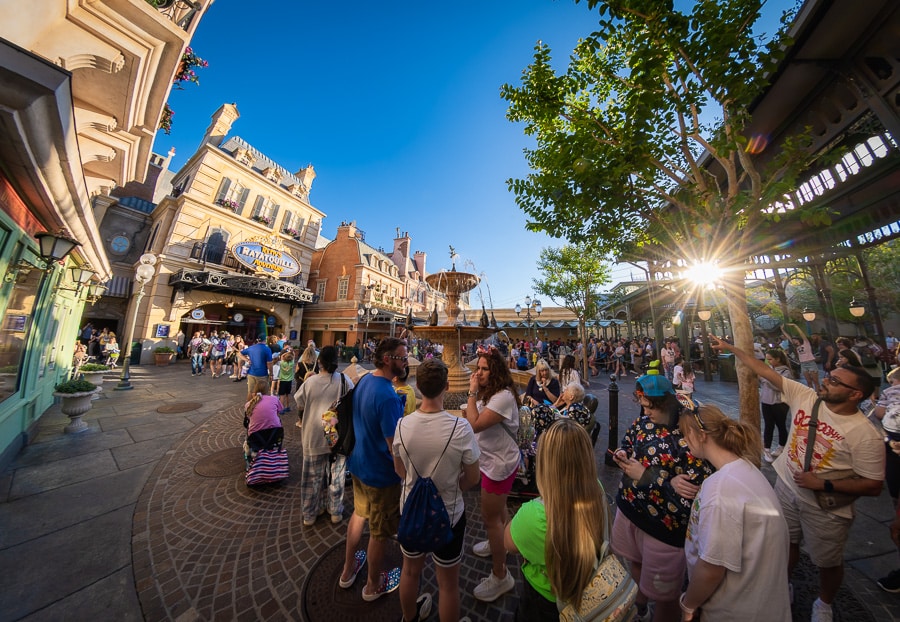
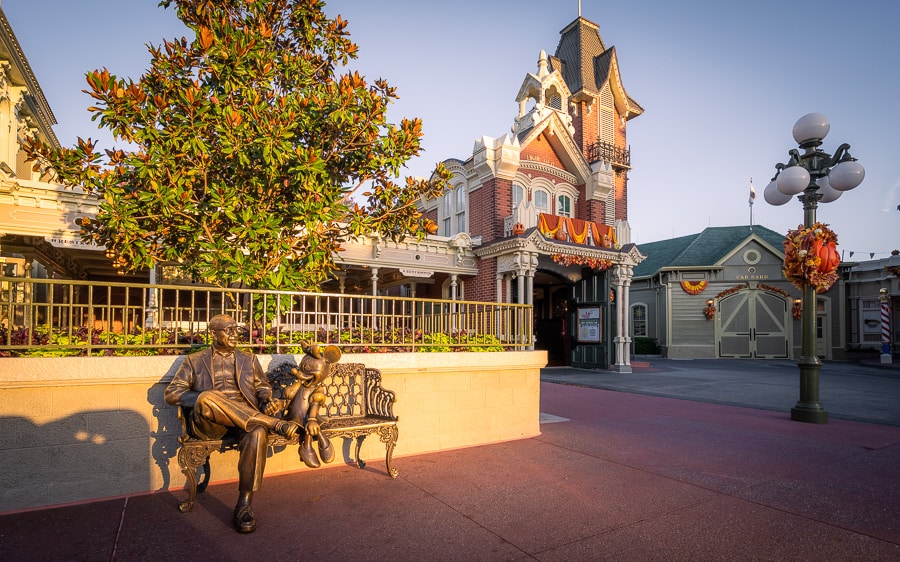
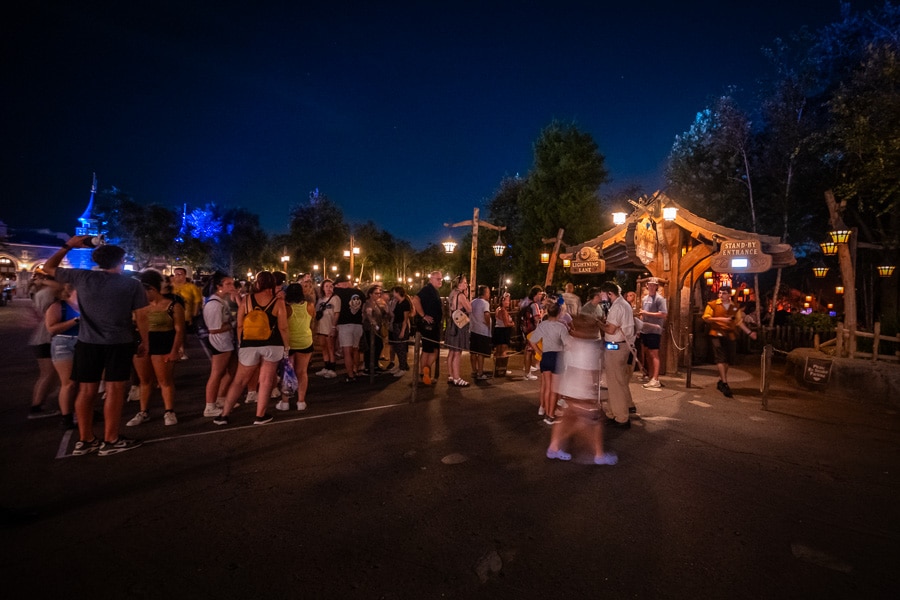
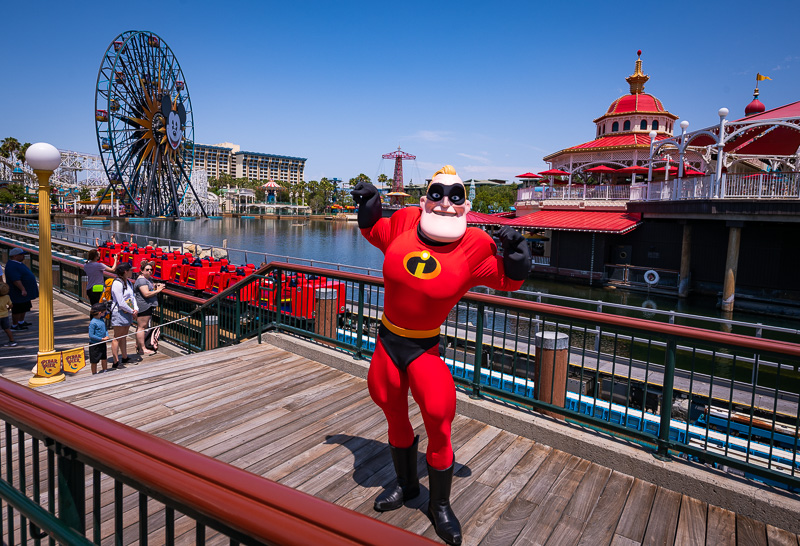
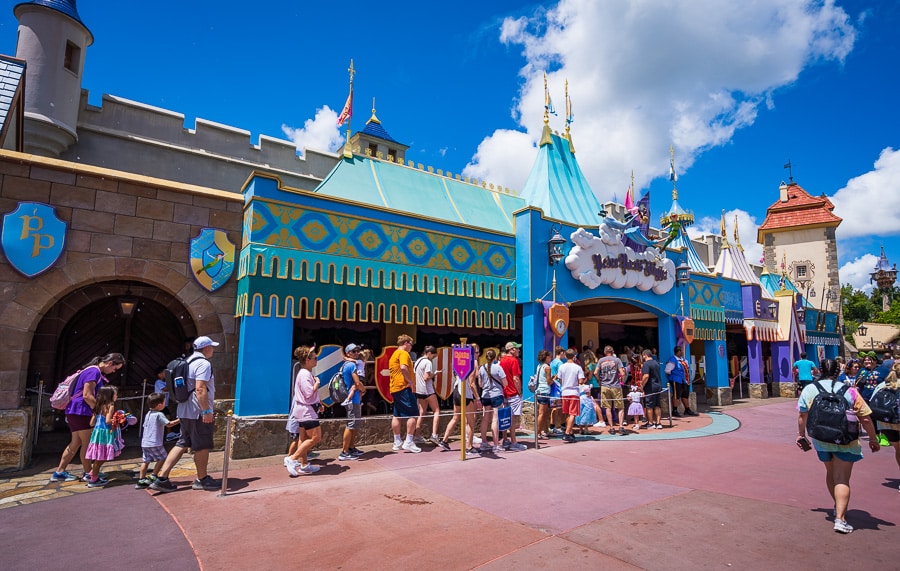
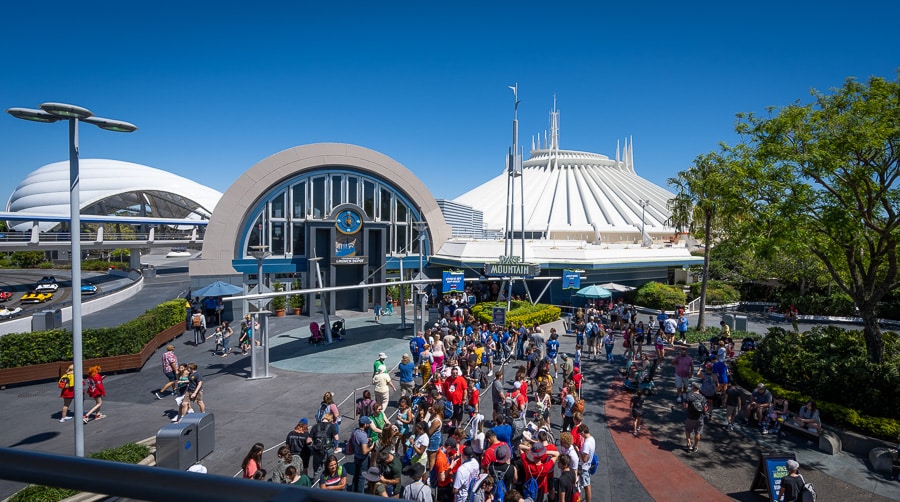
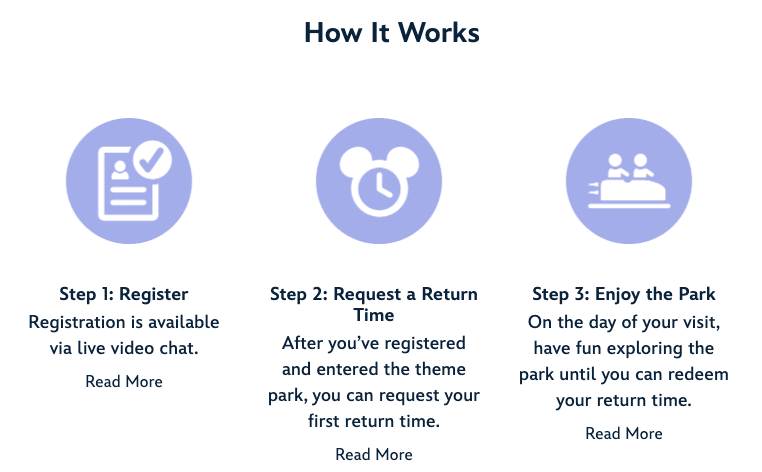


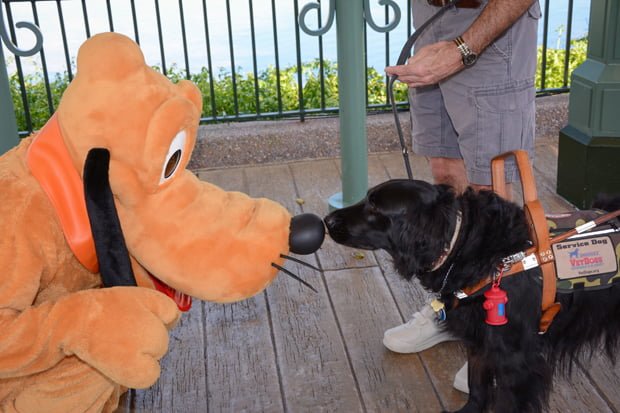
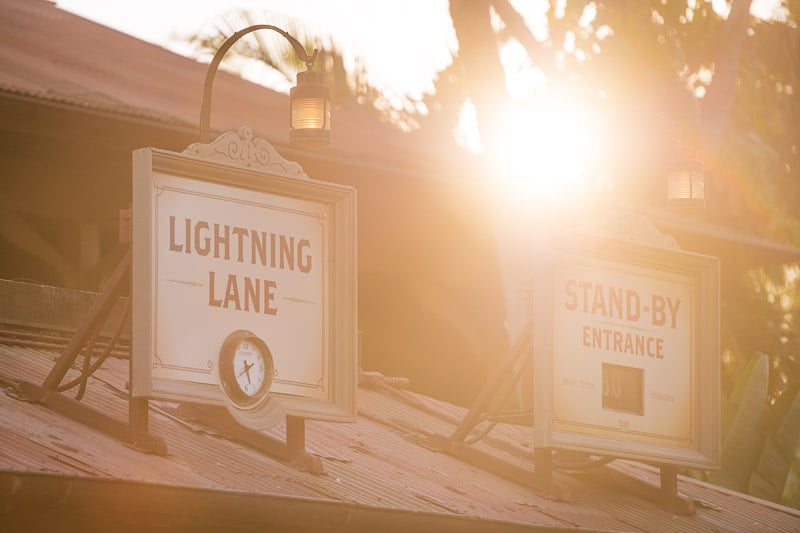
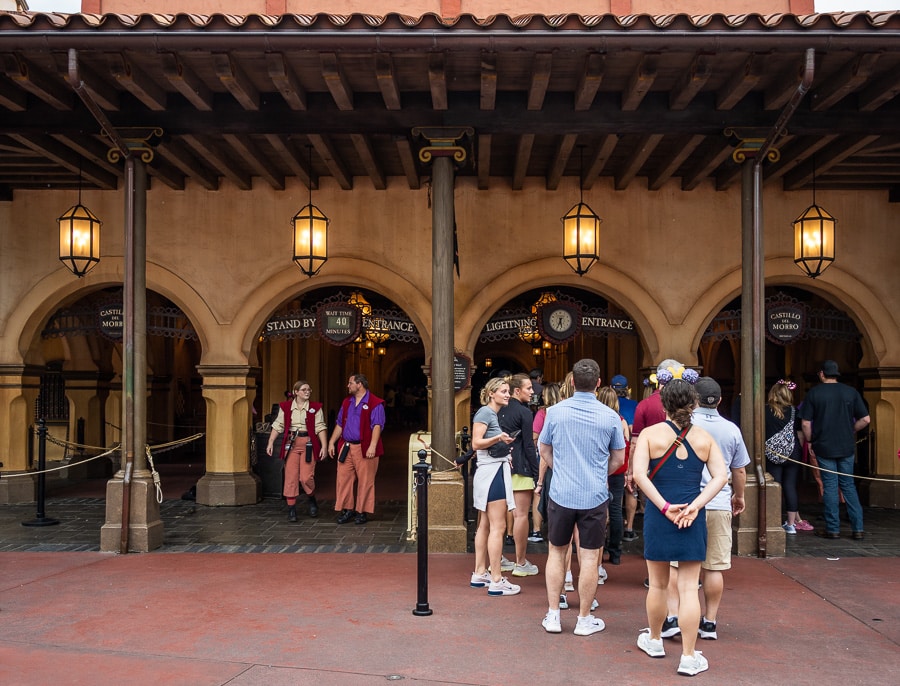
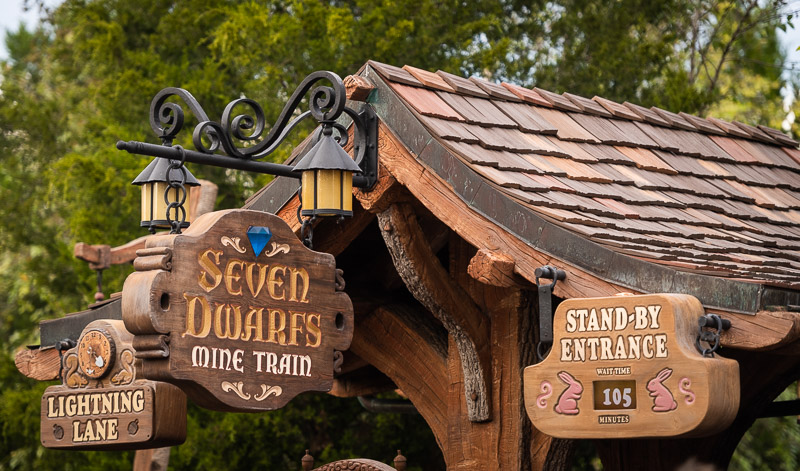
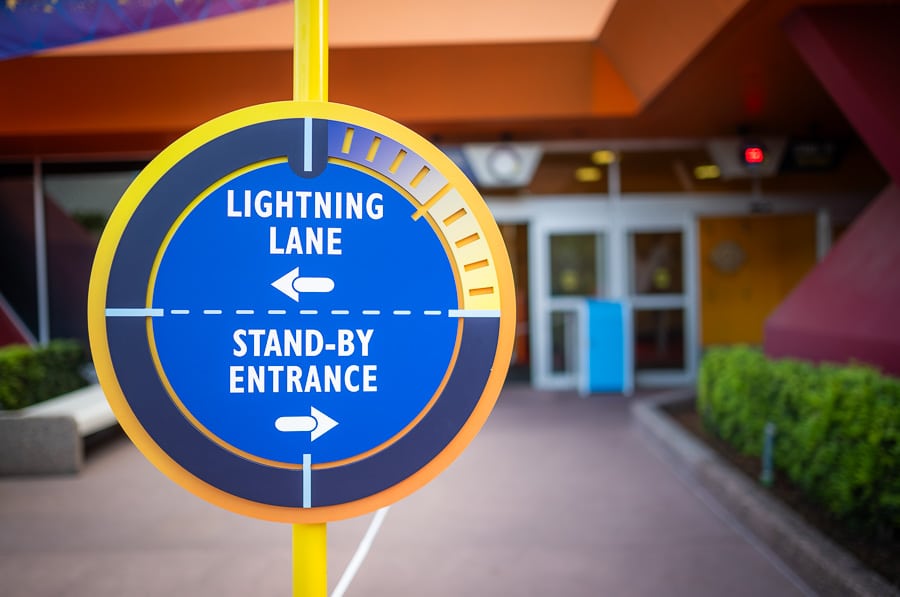
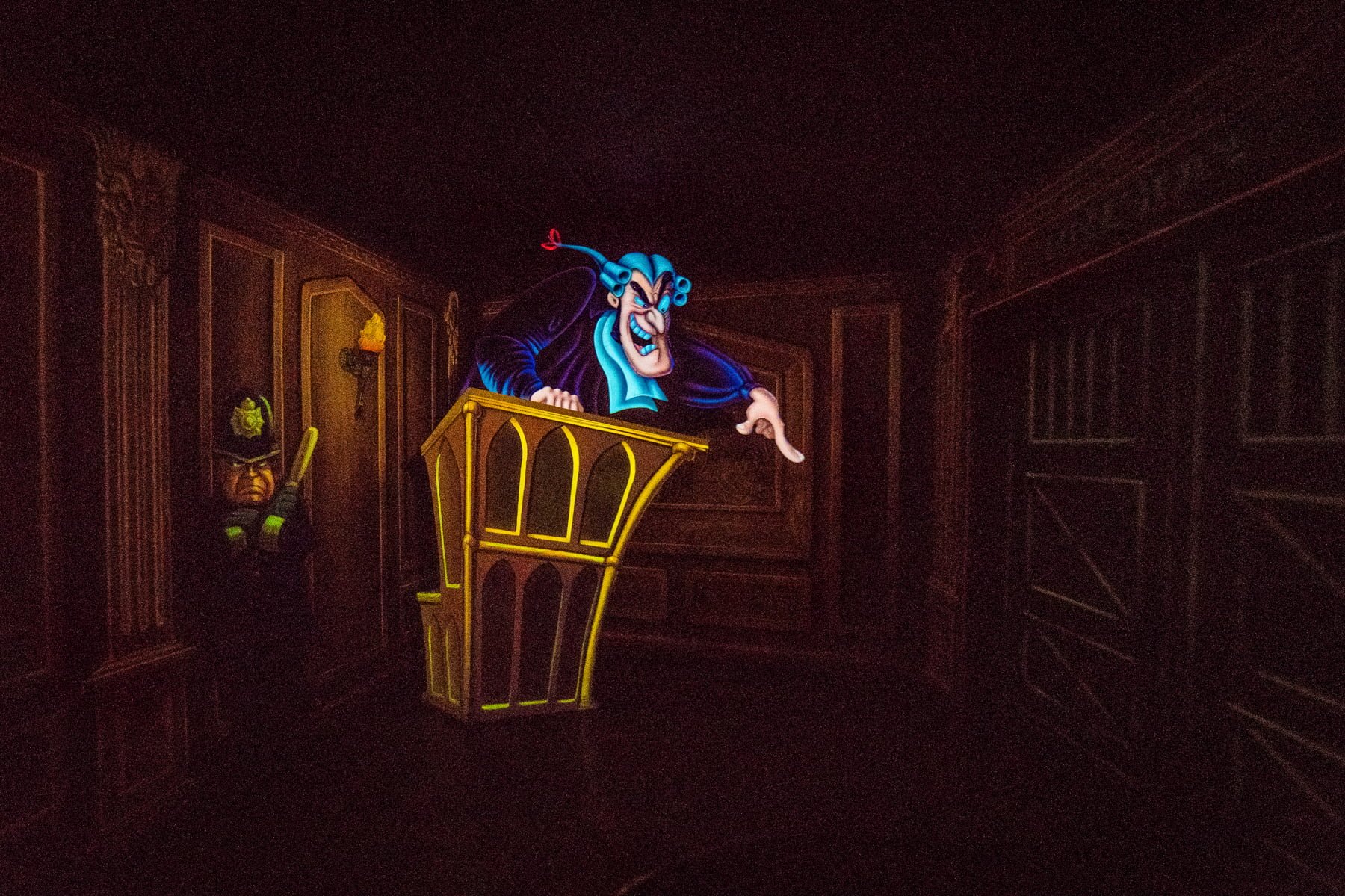
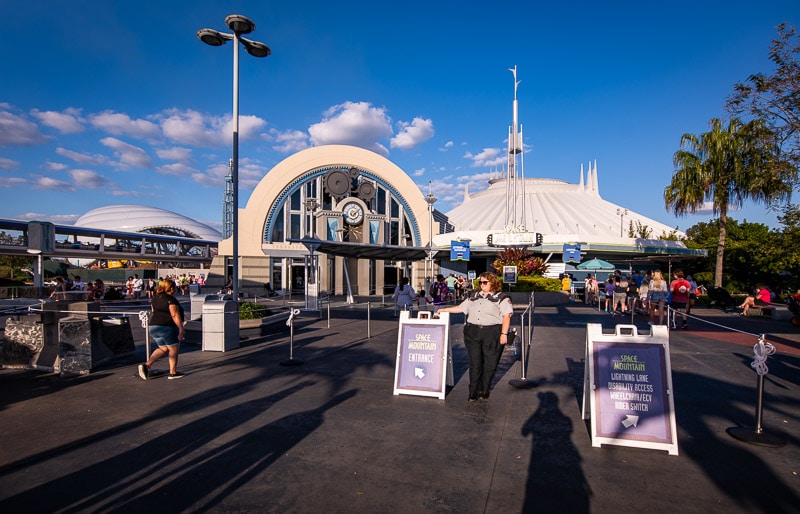

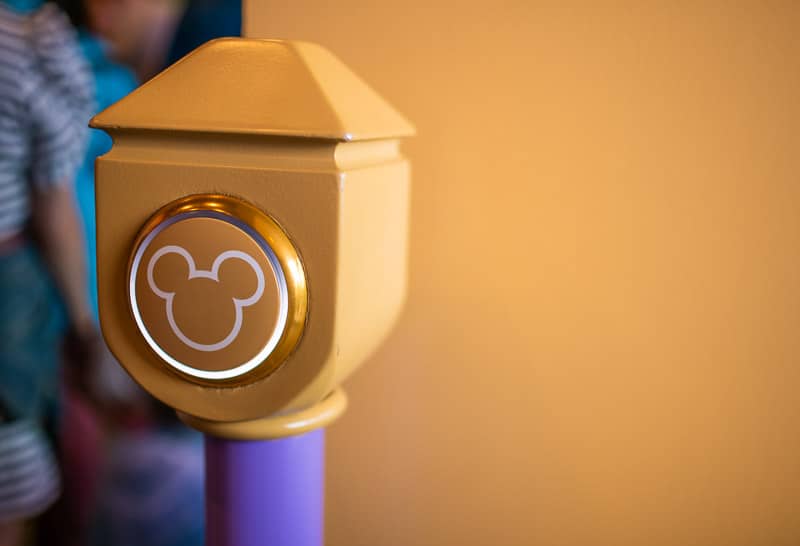
I have spent the last 3 decades at home alone or watching my family enjoy things from afar, due to a painful chronic disability. I didn’t know Disney even had such accomodations until friend convinced me to come along on a trip to celebrate my daughter’s graduation.
Not to be cringe, but a whole new world literally opened up for me. It is the one place in all of my life where I’m “normal” – I can participate instead of watching from the side-lines all because of DAS. We immediately became annual pass holders and this is where we take family vacations and my friend and I also do girl’s trips when we get a chance.
That said, my condition is what is known as an “orphan disease” because it is rare and poorly studied/understood, so the likelihood it will be on a list of eligible conditions is very low. It’s a miracle it was included in automatically qualifying conditions for social security disability. I would happily provide documentation, but not only do they not ask for such, they don’t want it.
And so I can’t help but feel this miracle I was given will be once again taken away and I’ll go back to seclusion and loneliness. It breaks my heart and I’m not certain I’m strong enough to just sit back and be left out again
As a “normal” park user, I’m a little excited that wait times may go down as the people who are abusing DAS will have to wait in stand by like the rest of us or possibly not go into the parks at all.
All for Disney trying to curtail the abuse. For people who need DAS, there’s nothing to worry about
I wish that were the case. :~( My elderly father is taking myself, my husband, and our two kiddos to Disney in December. My son will qualify for DAS, but only my husband, daughter and I can accompany him. We aren’t going to make my father wait in a regular line for an hour and attempt to try and time it right so we can meet him at the front…so our options are to either skip every ride with a long line (which is the whole point of DAS), skip DAS entirely and get Genie+, which is not nearly as user friendly for a 5 year old on the spectrum, or try and get my father Genie+ and time THAT with our DAS, which will also be very difficult, if not impossible. I’m really disappointed.
I understand the DAS abuse, but I believe the problem has been with the number of healthy individuals who are permitted to join these groups (and too often multiple groups at the same time) rather than with the disabled person. There are many reasons other than autism why a guest is incapable of standing in long lines. Many long-time Disney fans are aging, and as our bodies age, we are no longer able to do the things we could when we were younger. You will understand someday. My husband has used the DAS for many years. His physical problems are permanent and are getting worse as he ages. He cannot physically stand in one place for more than a few minutes without being in extreme pain. I have backout problems if I stand in one place very long, and I cannot tolerate the heat or the sun. We both need ready access to a restroom. We have never abused the DAS. We only use it for a couple of things each time we visit. Disney has made thousand of extra dollars from us because we generally use the waiting time to purchase food and drinks.
CM, I mean this with the most respect possible. DAS was never supposed to be for standing issues. But that’s not why I replied. You may have a perfectly correct reason to use it and be granted it. But I think you may be under the wrong understanding of the people under those with a DAS. You said that a young person was on 4. He could be 100. It’s the same as being on one. He can only ride if the person on a das is riding as well. And he can only be on one das at a time. So person A has him on FOP. Person B cannot add him to another FOP until he rides it and scans through. He cannot just jump out of the ride. Meet the next group and get back on unless that whole group including him waits the full wait time. Just as it sounds like you and your husband. You cannot be in multiple rides at the same time. You have to scan through. I for one am glad they are reducing it to 4 and immediate family because the groups have gotten out of control. I’m just worried you have the wrong understanding. Companions on the das have the same rules as the das person. They don’t just do as they please.
Tom, I just wanted to say thank you again for the way you report and provide commentary on issues like this. It can be disheartening to hear all of the “backlash” and negativity from people on social media, but your point that these are going to be the outspoken DAS abusers makes so much sense. And reading your perspective, plus the comments of some others on this blog, also gives me a little hope for the good side of people.
I don’t get why people are worried. I feel like Disney will genuinely figure out what each person would individually need to have a great day in the parks during the initial video consultation, even if they aren’t autistic, and I personally don’t use DAS but am grateful that they are taking the steps to weed out those who are misusing it. But maybe I’m just misreading what has been posted, but I really can’t see Disney saying no to someone who has explained what their specific disability is and what Disney can do to help that person in their parks?
I think worried a the wrong word. Disney world is a trip that takes weeks or months to plan. Everything is set then bam Disney makes huge changes. It’s the unknown that causes the angst. With people who have trips right around the time. It’s just the lack of consistent messaging and the feeling that Disney has got all their ducks in a line. For me I question it.
oh my gosh. you are so right. I guess I’m thinking Disney will “grandfather” in those who have used DAS before and have upcoming trips, but I totally get the question marks causing anxiety, maybe I’m just naive but I feel like Disney will do right by those who really need the pass, but who knows?
Very interesting. We never used DAS before COVID, because my husband could handle the waits and the lines. Then they added more and more plastic barriers and his claustrophobia and crowd anxiety kept him from riding his favorite rides. It wasn’t until a friendly cast member saw him waiting to traverse a particular part of queue until it was empty and he was assured of not getting stuck in it that we even learned about DAS. We used it a lot until the barriers came down, and he began being able to wait in line again. Now he doesn’t need it most of the time, for which we are so grateful! I appreciate that Disney seems to be walking the delicate line of providing accommodations while being aware of abuse of the system. I’m also glad they’re allowing all immediate family members instead of some arbitrary number, because if you’ve got 3, 4, 5 kids you want everybody to be able to go together!
It never even occurred to me that my claustrophobia would be considered a disability. So many rides now have lines that go through tunnels, where I leave a LONG gap ahead of me to create the “illusion of space”, if I can get through it at all. Space Mountain is a no because of the star tunnel, Tower of Terror is a struggle, Haunted Mansion I have to stand by a door. I now watch POV YouTube videos to preview the lines and rides to avoid areas with tight spaces, but also spoiling any ride surprises. I only stay at hotels/resorts that are 4 stories or less so that I know I won’t have to use elevators. Heck, I have to scrutinize plane layouts and try to pick cheap seats that are either close to the front or near a more open area. I will never visit a cave again, go in a submarine, or stay in an inside cabin on a cruise. It is very life-limiting. Does DAS know which lines would be problematic? Do they have alternate entrances? This could be so helpful!
Ooh- I know this one!! BRING BACK FAST PASSES !!! Duh – this is so obvious. Especially at Disney World – this free option made way more sense than the lightning lane garbage that clogs up the park and the lines. No one (particularly pass holders) wants to pay the outrageous fees charged for a service that for years prior had been in all ways superior and free for everyone. I personally have bladder issues due to a back injury – never needed disability service because we simply used fast Passes. Now I just don’t ride anything – I wait for the rest of my family while they ride. I have considered using the disability line skipping, but there are 6 of us and it’s just too embarrassing.
Bottom line – BRING BACK FAST PASSES
Wow. I had a panic attack just reading this article. This is my first time ever commenting on a public blog, but it was triggering. We visited WDW for the first time in 2021. Prior to that, we visited Disneyland yearly with DAS, but WDW seemed so much more overwhelming as a parent of a 17 y.o. teenager with a disability. Her development disability is invisible and is accompanied by mental health disorders (bi-polar and GAD), but you would never suspect that if you just met her on the street. I have often felt guilty using DAS, because when you are a parent of a child with a disability, you are very aware that there are people whose challenges are even greater. But I also know that we would not be able to enjoy WdW the way others do without DAS. And trust me that there are many adjustments we have to make even with DAS. Our trips are twice as long (8 days this time), so we can take frequent breaks from the parks and go back to the hotel room and can take everything at a slower pace. We have to drive 20 hours or fly and rent a car because public transportation to and from the parks is not guaranteed to be a viable option on any given day. We’ve never been able to do a rope drop, and I doubt we ever will. We pay for things like the fireworks dessert party and Fantasmic dinner party, since otherwise we wouldn’t be able to attend these at all. We spend a lot of the wait time for DAS resting and finding quiet places to work on emotional regulation. And even with all of this, there are times when meltdowns and panic attacks occur. Honestly, without DAS, we would not visit the parks at all. Disney is a bright spot in my daughter’s life. It’s an escape from the challenges she endures every day, and from the stress that the rest of my family faces by extension. I teared up reading this line: “Because the bottom line is that anyone using DAS out of necessity would trade places with you in a second and stand in long lines if it meant not being disabled.” The cost of DAS for my daughter has been 7 months of hospitalizations, multiple maintenance medications, an inability to attend traditional high school and the resulting stigma and social isolation, despondency and depression, self-harm and suicidal ideations, intensive talk and DBT therapy, and a future that is uncertain because college is not possible at this time and it is not clear whether she will be able to hold down a job. The price for the family has been secondary trauma to my younger children, a broken relationship with her elder brother, marital discord, anxiety and depression and STRESS for us – her parents, and the cost of having an adult child who is likely to be financially and emotionally dependant on us for our and her lifetimes. Would you know all of that looking at us when we are enjoying the happiest place on earth (thanks to DAS), definitely not. I love my daughter intensely and accept her completely as she is. But I would gladly wait in line for days (or heck, never visit Disney again) if it meant that she could live a life free of the suffering she’s endured and have the promise of the future that so many people take for granted. Just the thought of trying to justify our need in a virtual meeting while my daughter sits by makes me anxious and avoidant. And knowing that I have to shell out the money for tickets and reservations before getting approval makes me break out in hives. I almost wish we could submit her doctor’s/psychologist diagnoses and skip the meeting altogether. All of that said, I recognize the need for reform (my daughter has shown me the TicTok videos). But since our trip is next week, I won’t have to navigate the reforms for another year. 🙂
C in NYC…. You could not have explained that with any more grace then you have just done. I completely hear what you’re speaking of. I hope your next trip is successful and I wish you the best with your daughter. People truly would never capture the ins and outs you just described
C in NYC, Thank you for your post. You explained it better than I ever could. Our has a similar situation. Our son is 26 and home 24/7 because his needs are too high for a day program and he is unable to hold any job, attend post-secondary school or ever live on his own. We also don’t rely on public transportation. Flying does not work (we have tried) because our son cannot self-regulate. We make the 24 hour drive from Minnesota over the course of 3 days. We stay at the Contemporary Resort so we can walk to MK since you can’t drive your own vehicle there and drive to the other 3 Parks. It is our son’s Happy Place as well. Our son has co-morbid disabilities so most people can tell by looking at him he has special needs, but when he was young it wasn’t as obvious unless you spent time with him.
Hugs to you!
I just wanted to say a couple of things that hopefully help and reduce your stress. The first is that, if you book a package, you only have to put $200 and it can be cancelled. It’s not like if you buy just the tickets and they’re non-refundable. Packages are refundable! So, if you go that route, you don’t have to stress if you decide to cancel later.
Also, I want to hopefully help with your fears about the changes. DAS itself is changing, and people who qualify won’t get pre-bookings anymore. They will offer OTHER accommodations for people who don’t qualify for DAS but still have a disability or medical need. One of those accommodations is actually going to be pre-booking LLs. So, even if they say she doesn’t qualify for DAS specifically, that doesn’t mean she won’t qualify for some other accommodations. So, try not to stress about it too much. It sounds like they’re going to provide accommodations based on what people need (more specifically) instead of just doing a general DAS for everyone. So, even if she doesn’t qualify for DAS specifically anymore, she may qualify for some other accommodations more tailored to her needs. Good luck!
Thank you for sharing your story… I teared up reading it. I hope you and your family have a truly magical time in Disney, and that the transition to the new DAS will be smooth for you in the future <3
I am 30, disabled, and I went to Disney World with my mother in 2023. I was able to do the video chat with the cast member. This is how I described my cerebral palsy and low vision:
“Because I have cerebral palsy, I have left side weakness that prevents me from standing in line for long periods of time. In addition, I have low vision which makes it a hazard for me to be in large crowds.” The Cast Member approved me for DAS without much question. Now, I’m concerned that if I go again next year they will deny me or the Advent person will not believe me. I’m also concerned for other people not being able to apply for DAS in person at Disney World because some disabilities need to be seen in person in order to understand. I also do have Autism Spectrum Disorder so I really hope they will believe me in the future and allow me to get DAS. I would be more than happy to provide any necessary medical documentation to explain my multiple disabilities. Disney needs to be very careful as to how they implement this new system, otherwise they will face lawsuits. Sorry for the long post, I’m just very nervous about this new system.
Avery, Please don’t share specifics of what you have said to be approved for DAS. We really don’t know the details of new accommodations process at WDW but the info you just shared could be used by someone abusing DAS since they do not require proof. They would just tell a CM exactly what you shared. This is how the abuse has been happening. People find out what qualifies someone and then just tell CM those things (even if untrue). I have seen this in DAS fb groups plenty of times when people come fishing for info. I have also seen people coach others what to say. I really encourage everyone who applies for DAS to not share details of your conversation with a CM if applying for DAS. You can share if asked where to go to apply and how the pass works if given one but avoid sharing the specifics of that conversation you had during your DAS chat with CM.
Thank you for sharing this sentiment. I’m sure Avery meant no harm, but its a good reminder of who are out there.
Kari, I really appreciate you pointing out my mistake. I was only attempting to share my story and express my concerns regarding the upcoming new system. If possible, I would request that my comment be removed. I have no desire to spread or encourage misuse.
We are in the group utilizing DAS since the pandemic. Our first trip to a Disney park after they reopened was to Disneyland in June 2021 for my sons 10th birthday. We planned the trip, and then the opening of Avengers Campus was announced for the same weekend. The crowds to get into the park were extreme. By the time we got in my son wanted to leave and go back to the hotel and was having a meltdown. While I left my husband calming him, I went to City Hall to get him a birthday button. I asked the CM there what her recommendation was for my son. I told her what his issue was and that in the past we utilized fast pass and would have to leave lines frequently and try again later. She signed us up for DAS. We really had no idea what it was and another cast member had to explain it to us. For the first time since my son was a baby, we rode certain rides that we had never rode as a family because we could not make it through the queue. We have since utilized it on another trip to Disneyland and Disney World last summer and it has mostly worked for my son. There are still times when the return line is too crowded and long and we must leave so after waiting for a return time we have to start all over again. I worry because my son does not have autism, but I believe his diagnosis will still fall under developmental disability. Also, were you to just look at us you would not see a disability. So for the people saying they see people abusing it because nothing looks wrong with them, they cannot possibly know that. For the first time in my life I’m glad I do not have a Disney trip currently planned. My anxiety and OCD got the best of me for weeks before having to do the video chat for our last two visits. I hope the guidelines become a little more clear and that everything is ironed out quickly. I’m also tired of Disney intentionally saying things so vague just to get a reaction. I feel like they still subscribe to the all publicity is good publicity mantra and think as long as people are talking about you it’s a good thing. I think it’s outdated and extremely annoying.
I don’t think it is all abuse but also maximum usage. Disabled guests who previously could cope with standby waits no longer can. Insufficient ride capacity and the prioritizing of all guests in the LL (genie, DAS, VIP, etc) make the SB wait times grow. Strategies that worked for a 30 min wait, no longer work for 90+ min. These guests with a disability, now seek DAS help. Long lines when you have debilitating symptoms such as bladder/bowel issues, blood sugar fluctuations, POTS, PTSD, can cause anxiety because”WHAT IF” it happens deep in the queue . So, if they qualify they use DAS as insurance. Long lines mean more genie guests, more DAS guests annnnnd the lines get even longer. It is a circular problem.
Wow! You’ve really made a lot of valid points! Hopefully others will open their eyes to these things .
I totally agree with you. The standby waiting times have gotten out of hand. The other problem is that the lines just don’t move for extended periods of time. Disney’s fan base is aging, so age-related issues such as joint, blood sugar, blood pressure, bowel/bladder issues, etc., are more prevalent. If Disney wants to do away with its long-time, aging fans, it should just come out and say so and stop pretending that we are valued customers. The DAS is not a line-skipping service. It merely means that we can wait elsewhere in the park for our return time. We most often use the time to purchase food and drinks and wait out of the sun. We just enjoy the ambience of the parks. Based on my experience, the DAS abuse has resulted from the number of DAS groups healthy individuals are permitted to join. We once had a boy in line with us who told us that he had been riding FOP all day because four members of his family had a DAS, and he was in each group. It’s situations like this that Disney should concentrate on eliminating.
I have used DAS in the past for issues that have arisen due to sequelae of colon cancer surgery. I am anticipating that I will no longer qualify for DAS, and it sounds like they will offer a “return to queue” option for me going forward. I am absolutely fine with that if it is an electronic solution like some sort of pass you show to get back in LL by tapping out somewhere if you have to leave. I am very apprehensive about any alternatives since I have a trip planned 5/25-29 and will be solo with my 8 year old so he cannot hold my place in line while I rush to a restroom. From the generic email I got back from Disability Services, it sounds like I cannot video chat until 5/20 for a visit that starts 5/25? I know that I am not alone and there are many who have previously used DAS that have issues similar to mine such as Crohn’s, UC, etc. When I click through the new pages, all they mention about issues like this are that First Aid Centers have limited incontinence products. That is not very reassuring! But I can’t imagine that they will have a “return to queue” plan hammered out in just 5 days from 5/20 to 5/25. So I’m really worried. Anxiously awaiting any updates Tom might post here regarding this because I think it’s a top topic of angst right now.
I have the same exact issue along with crohns. I too am anxious about the outcome on how they will handle these circumstances. I have never used a return to queue as I find it comes across as rude and line cutting. I truly hope that
Disney will understand how difficult it is to wait in long lines with this type of condition. I have on numerous occasions waited for a very long line only to have to leave it and start from the beginning again.
I have used DAS for my last few trips to WDW. I have diabetes and take a drug, one of which side effects is hypoglycemia, or excessively low blood sugar. It happens when I exert too many calories without eating enough to offset the exertion. It does not happen often but when it does, I must immediately take emergency glucose and eat a substantial meal. If I ignore the symptoms, it can quickly result in loss of consciousness. It is not feasible to test my blood while standing in line and it is not possible to know the trajectory of my blood sugar without doing a finder stick test. Since it is not a developmental disability, I guess I will no longer qualify for DAS.
I know what the sure fire solution is: charge the same price for DAS as for Genie+! Who is going to fake disability then? Like in my town, we have train service, and disabled people can get help from the driver in getting on and off and finding a seat, but they still pay the fare like everybody else. Disability doesn’t mean free, it just means accommodation to make it easier or at least possible to enjoy a service.
But the easiest solution for Disney and everybody else, really, is to bring back the free fastpass. Signing up for the DAS is a real pain, and you have to do it every visit. Nobody (who doesn’t need it) is going to bother with it if the fastpass is back.
Disney can even keep the Genie+: the fastpass is basic, for the shorter wait time rides (under 30 minutes), while the Genie+ includes the more popular rides, and the Lightning Lane for the newest, most crowded rides. I’ve seen Rise of the Resistance at 30 minutes before, and when that happens, it cans show up on the free fastpass availability like a surprise gift.
Paying for a DAS is not the solution. I have a DAS and still have to wait two hours to use it. Do Genie + users have to wait to use it?
There are laws protecting disabled people. They should be able to have the same opportunities as everyone. Hence the DAS giving someone a chance to participate by using the standby line timeframe yet be able to sit out of the line. Lightening lanes are merely their entrance as the disabled person waited elsewhere , but for the same amount of time as everyone. Forcing purchasing LL is not providing disabled persons an equal opportunity . I definetly agree with returning the free fast passes as it helps organize your day in advance to correlate with dining reservations etc. we live Disney but mostly for the ambience as our ride choices are limited as well as time in the park.
This comment made me laugh. Maybe you didn’t read before you pressed send.
What you are suggesting is you charge disabled customers more than you charge other customers as they’re not able to enjoy the parks without DAS?
“DAS is intended to accommodate a small percentage of Guests who, due to a developmental disability like autism or similar, are unable to wait in a conventional queue for an extended period of time.”
Hi Tom,
My son is severely developmentally disabled and on permanent Social Security Disability with Medicare, so “lucky” for us, we still qualify for DAS. But that dying kid from the Make a Wish Foundation at least is not autistic, she is out of luck?
Am I missing something?
Sincerely, Alex
Hey Alex! As a mom of a make a wish kiddo the pass they give the kids for the trip is actually not DAS, but a special Wish pass that allows access to the lightning lane. Sometimes it’s confused with DAS, but it is a different pass the CMs are trained to recognize. It’s only dated for the length of the trip